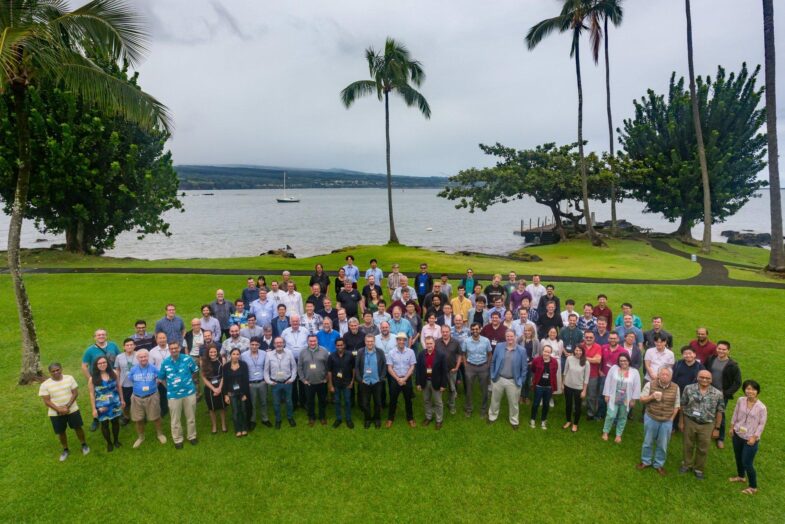
EHT awarded Royal Astronomical Society 2021 Group Achievement Award
MIT Haystack Observatory and the entire Event Horizon Telescope (EHT) collaboration (https://eventhorizontelescope.org/organization) has been awarded the Royal Astronomical Society (RAS) 2021 Group Achievement Award. The EHT is a global network of synchronized radio observatories that work in unison to observe radio sources associated with black holes. In April 2019, the EHT team showed the world the first image of the shadow cast by the black hole in M87, made possible by the enormous baselines that give the EHT its exquisite angular resolution.
The members of the EHT are honored by this distinction that the RAS awards in order to recognize outstanding achievements by large consortia in any branch of astronomy. Among the previous winners count the Planck Team in 2018 and the LIGO Team in 2017. For its unparalleled precise observations, the EHT combines the power of existing telescopes that can observe at millimeter wavelength around the world, including the ALMA interferometer in the Chilean Andes that is operated in a joint global collaboration.
Haystack Director and Chair of the EHT Collaboration Board Colin Lonsdale said, “This award from the Royal Astronomical Society honors the sustained efforts of many talented and dedicated scientists and engineers from across the globe, and we are delighted to receive it on behalf of the entire collaboration. This international team continues to push the boundaries of the technique and conduct observations. We look forward with excitement to new scientific advances in the study of event horizon scale structure around black holes.”
The RAS citation statement reads, “This image has already inspired millions and will continue to do so. It represents an important milestone in human ingenuity and scientific endeavour, and is opening new doorways to study the physics of accretion around super-massive black holes in completely unprecedented ways.” Furthermore, “the realisation of the EHT represented a formidable challenge and was made possible only by decades of hard work and commitment by thirteen stakeholder institutions, a variety of agencies, and more than three hundred forty researchers. This is one of the finest examples of an achievement resulting from close collaboration by researchers from around the World.”
We look forward with excitement to new scientific advances in the study of event horizon scale structure around black holes.
Colin Lonsdale, MIT Haystack Observatory Director and Chair of the EHT Collaboration Board
EHT collaboration director Huib van Langevelde said, “We are thrilled that our work on imaging of the event horizon regions in super-massive black holes, at the edge of technology and achieving extreme resolutions in astronomy gets such a recognition from this renowned institution; it is an inspiration to our team to deliver more, fundamental scientific results on black holes.”